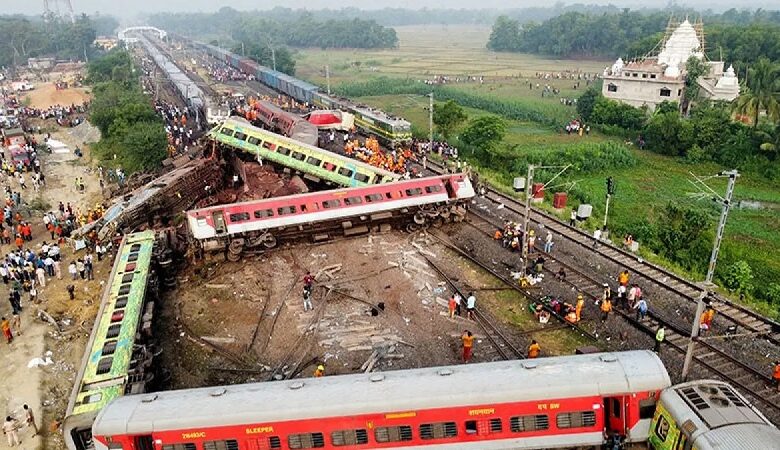Tragedy Strikes Andhra Pradesh: Deadly Train Collision Claims Lives and Sparks Investigations

By Agnibeena Ghosh
In a heartbreaking incident that shook the nation, at least 13 people lost their lives, and 50 others sustained injuries in a catastrophic train collision that occurred in southeast India on Sunday, October 29th. The collision took place when a train traveling from Visakhapatnam, Andhra Pradesh, to Rayagada, Odisha, came to an abrupt halt due to a break in an overhead cable, only to be struck by an oncoming train. This disastrous event unfolded in the Vizianagaram district of Andhra Pradesh and has raised numerous questions about railway safety and the responsible parties involved.
According to reports by Reuters, a senior railway official confirmed that the collision resulted in the derailment of two coaches carrying more than 90 passengers on the stationary train. As the nation mourned the tragic loss of lives and prayed for the speedy recovery of the injured, a preliminary investigation conducted by the country’s railway ministry pointed towards “human error” as the primary cause of the accident. This error was attributed to the “overshooting of signal” by the stationary train, a revelation that has left many wondering how such a grievous mistake could lead to such a devastating collision.
M. Deepika, the superintendent of police for Vizianagaram district, shared that out of the 13 casualties, eight victims have been identified so far. In the wake of this catastrophe, railway police have initiated a comprehensive investigation to determine the exact sequence of events and individuals responsible for this grave accident.
This tragic incident bears an eerie resemblance to a train accident that occurred just four months prior in Odisha. In that earlier incident, three trains collided, resulting in a staggering loss of 275 lives and leaving over 1,000 individuals injured. This stark reminder of the previous disaster raises concerns about railway safety and the need for enhanced measures to prevent such incidents in the future.
In the immediate aftermath of the collision, rescue operations swung into action at the accident site. Railway Minister AshwiniVaishnaw assured the public that all injured individuals had been promptly transported to hospitals for medical attention. The Chief Minister’s Office of Andhra Pradesh also issued directives for quick relief measures to ensure that the injured receive the medical care they urgently require. Additionally, nearby districts were instructed to deploy first responders to the accident scene, highlighting the need for coordinated efforts in times of crises.
Indian Prime Minister Narendra Modi himself acknowledged the gravity of the situation and engaged with Railway Minister AshwiniVaishnaw regarding the accident. A statement from the Prime Minister’s office conveyed his condolences to the bereaved families and his prayers for the swift recovery of the injured. This incident has sparked conversations about the broader issues of railway safety and infrastructure in India, drawing attention to the need for more rigorous safety measures and thorough investigations to prevent such tragedies.
To address the immediate financial burdens faced by the affected families, India’s Minister for Railways, AshwiniVaishnaw, announced compensation packages. Families who have lost a loved one will receive $12,000, while those who suffered grievous injuries will be provided with $3,000 in compensation. Individuals with minor injuries will receive $600 to alleviate their medical expenses. While these measures aim to provide financial support to the affected, they also underscore the need for systemic changes to ensure the safety of passengers and the prevention of such accidents in the future.
The tragic train collision serves as a stark reminder of the need for a comprehensive review of railway safety protocols, infrastructure maintenance, and the roles of railway authorities in preventing such catastrophic events. The “human error” that has been cited as the cause of this collision raises questions about the training and oversight of railway personnel, as well as the need for technological advancements to enhance safety measures.
The heart-wrenching train collision in southeast India on October 29th, which claimed the lives of at least 13 individuals and left 50 others injured, has sent shockwaves across the nation. As authorities work tirelessly to investigate the incident, provide support to the affected families, and tend to the injured, this tragic event has underscored the urgent need for a renewed focus on railway safety and infrastructure improvement. The ultimate goal must be to prevent such devastating accidents from happening in the future, ensuring the safety and well-being of all railway passengers.
News Mania Desk / Agnibeena Ghosh 31st October 2023






